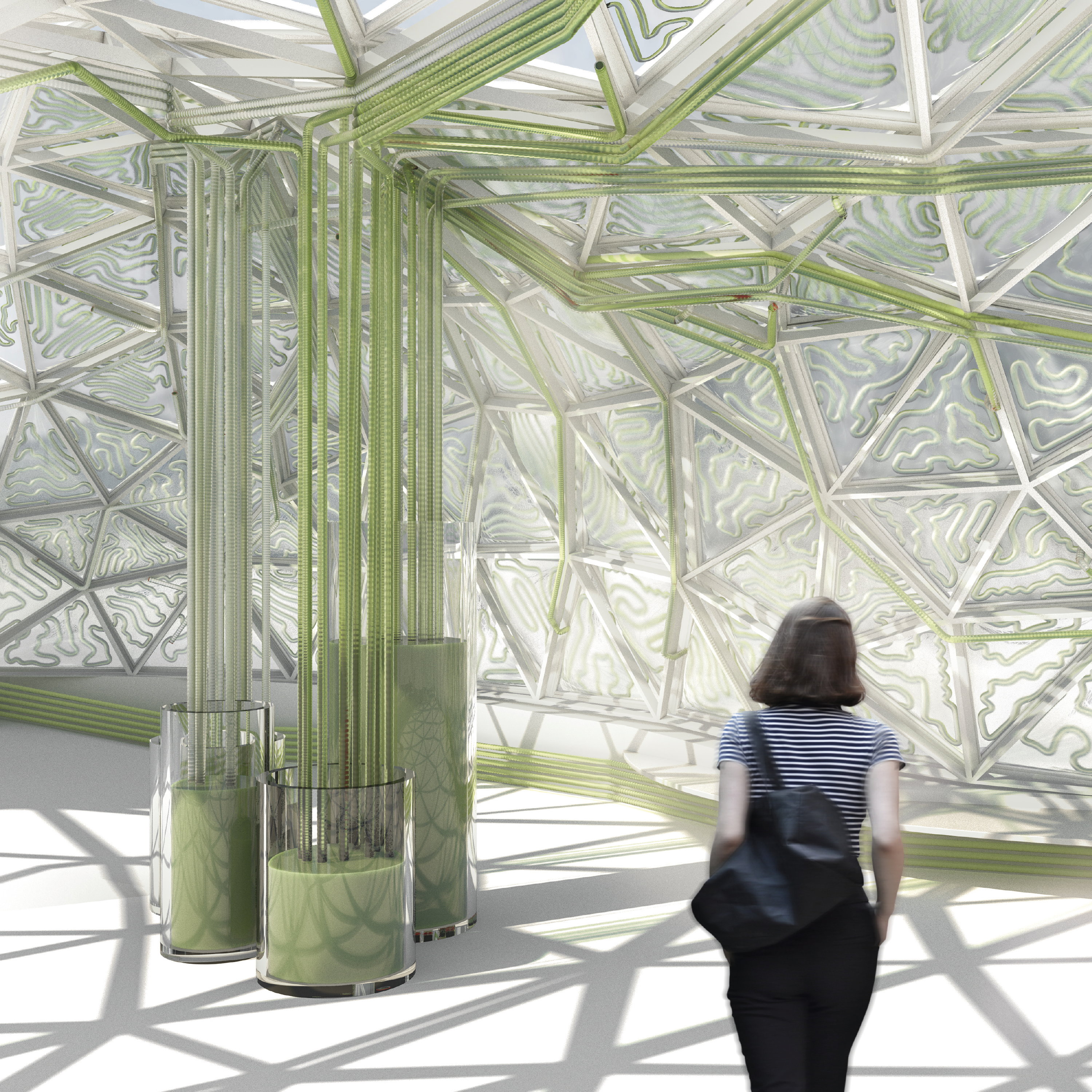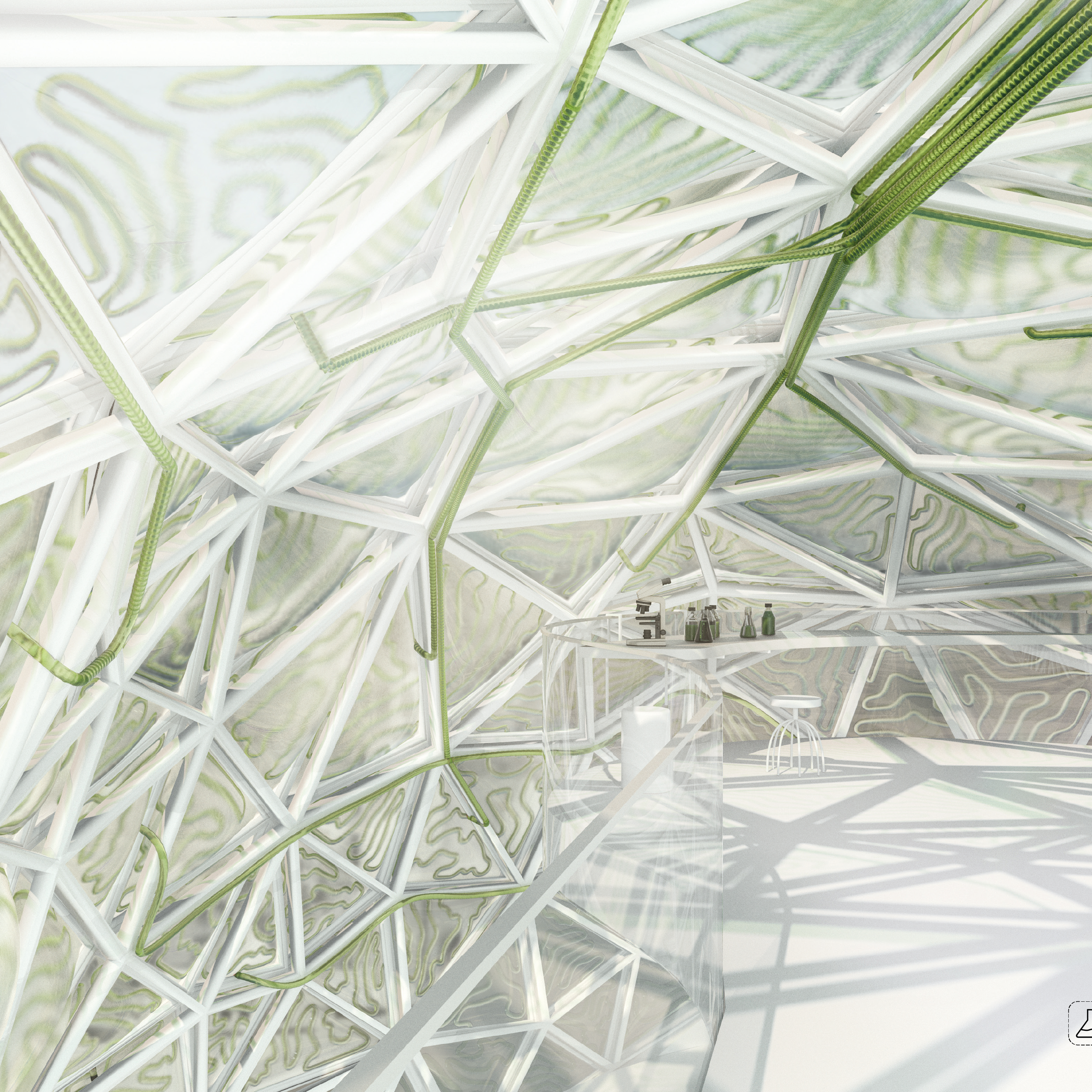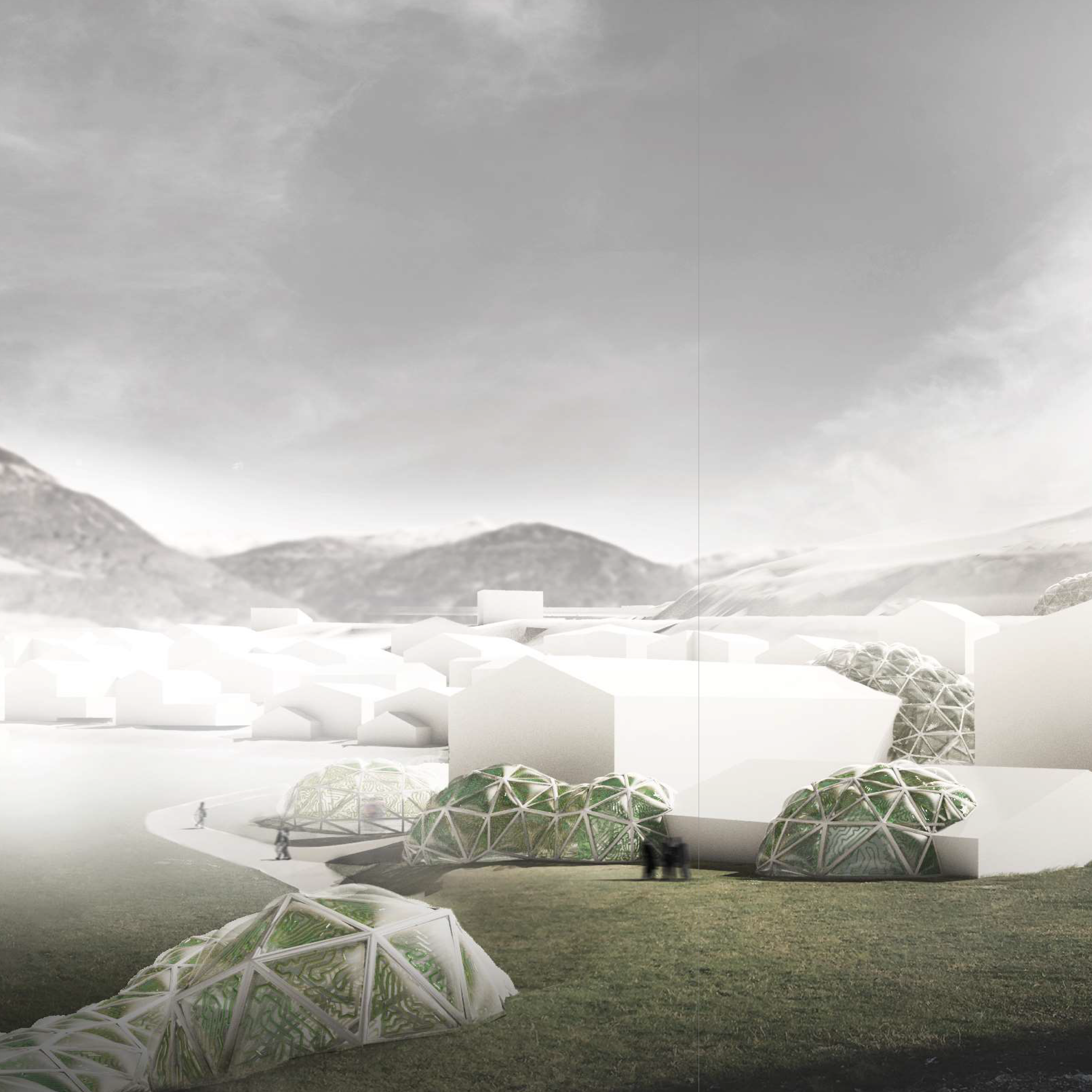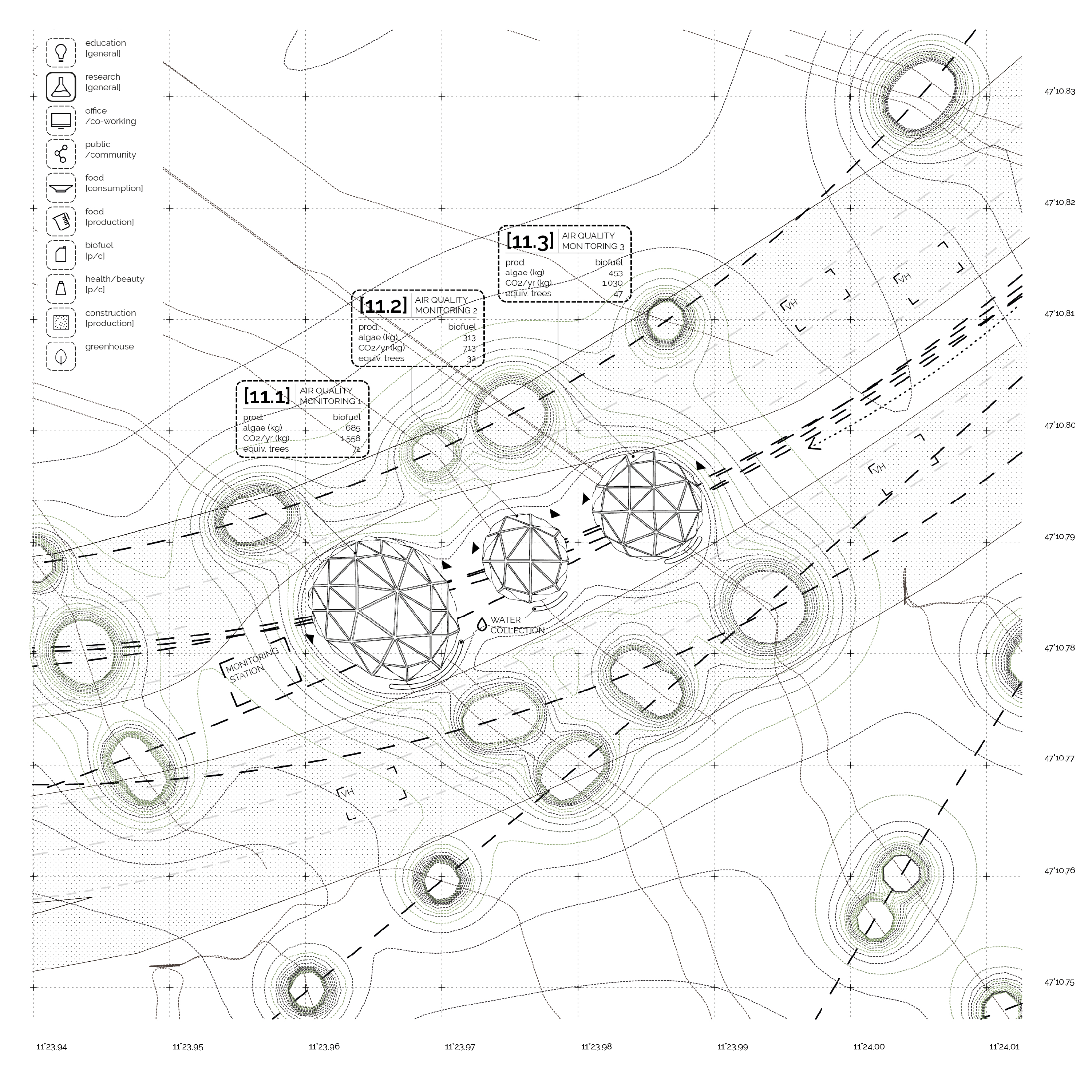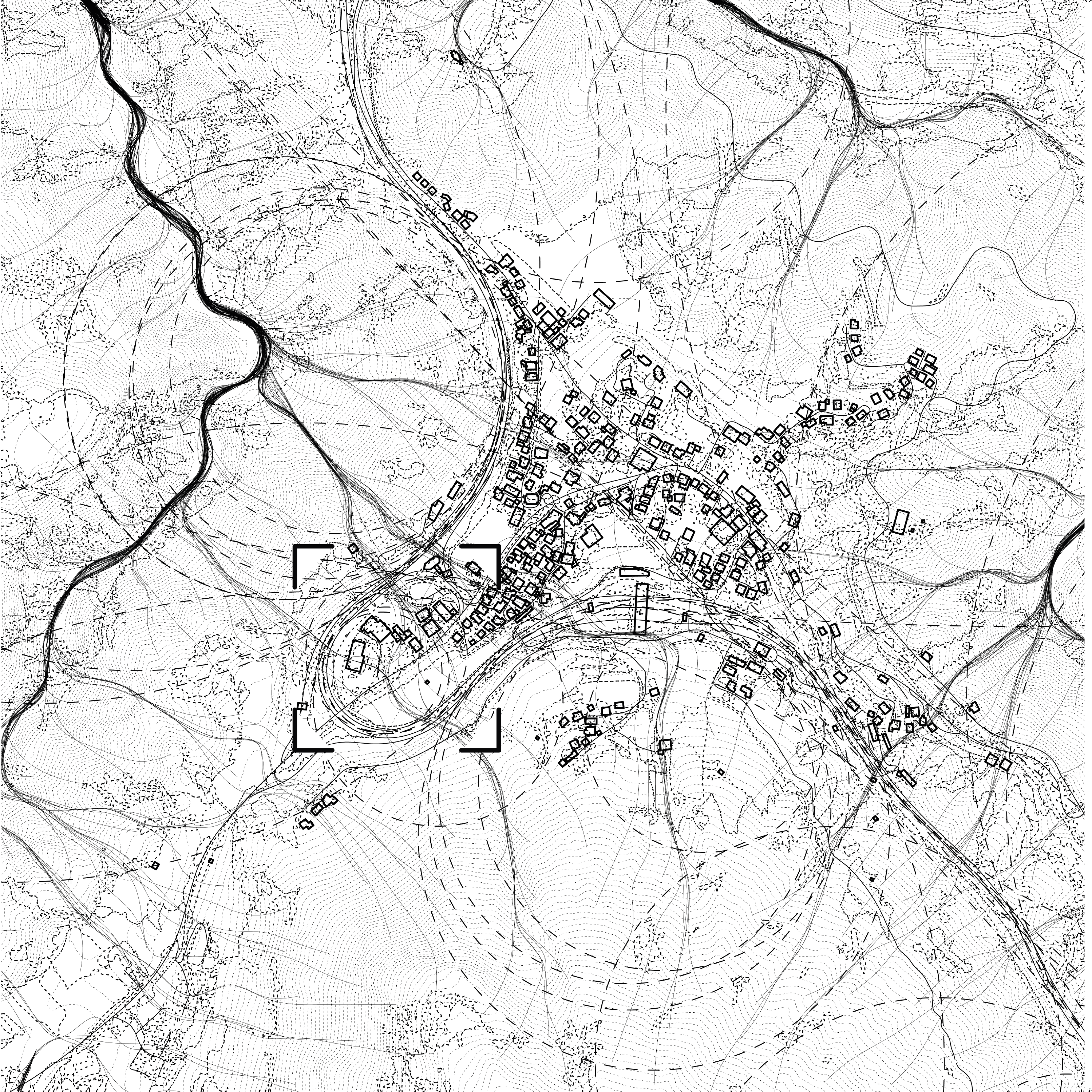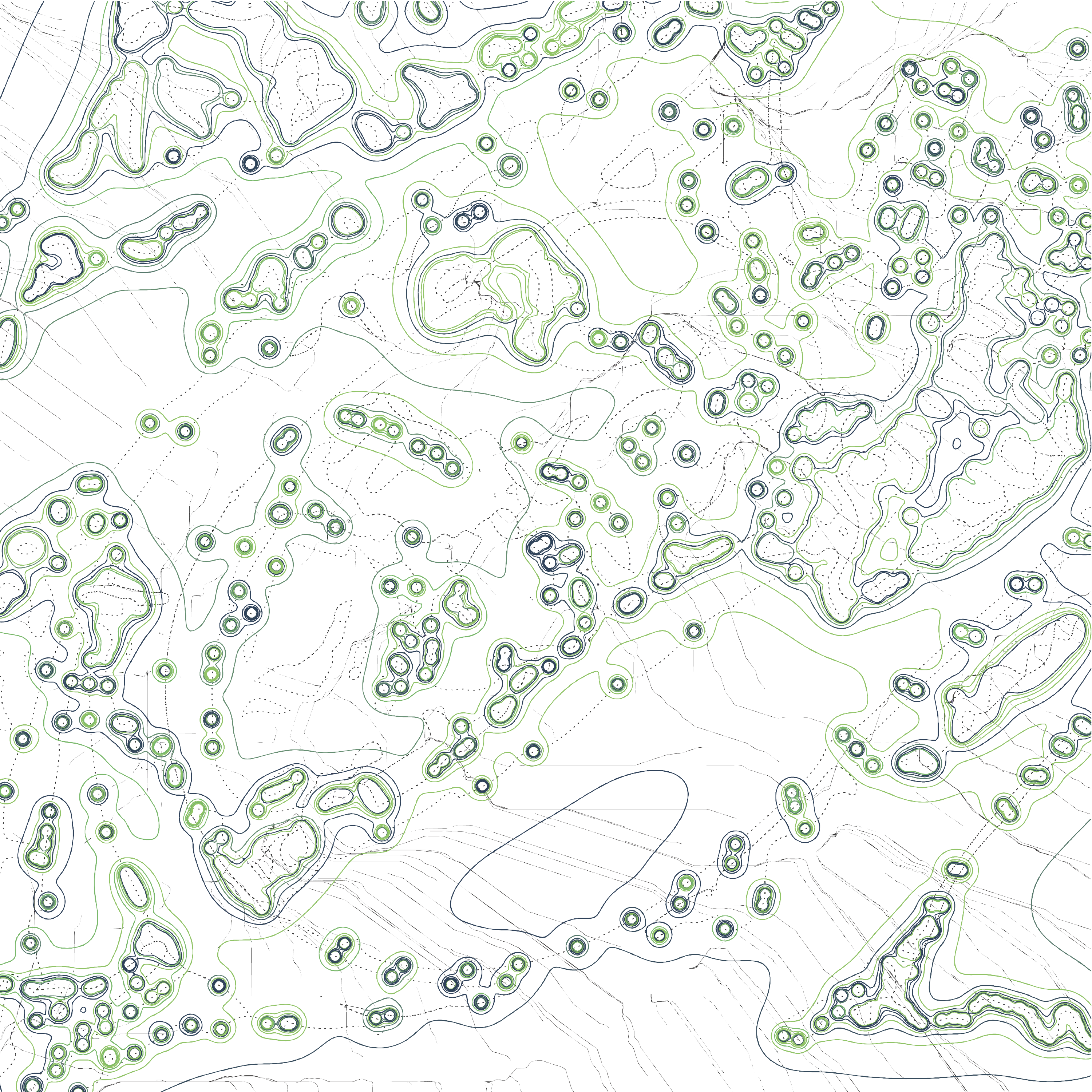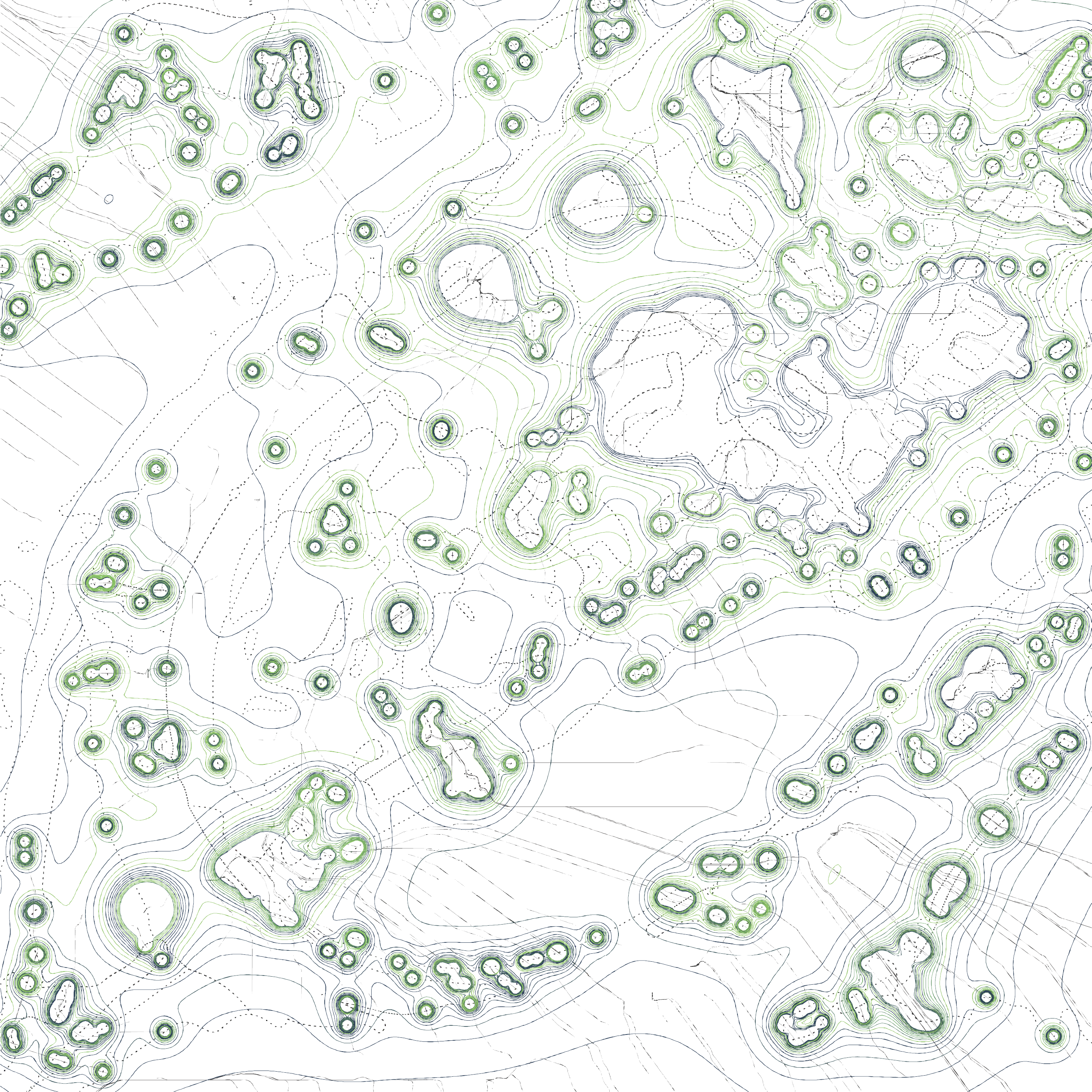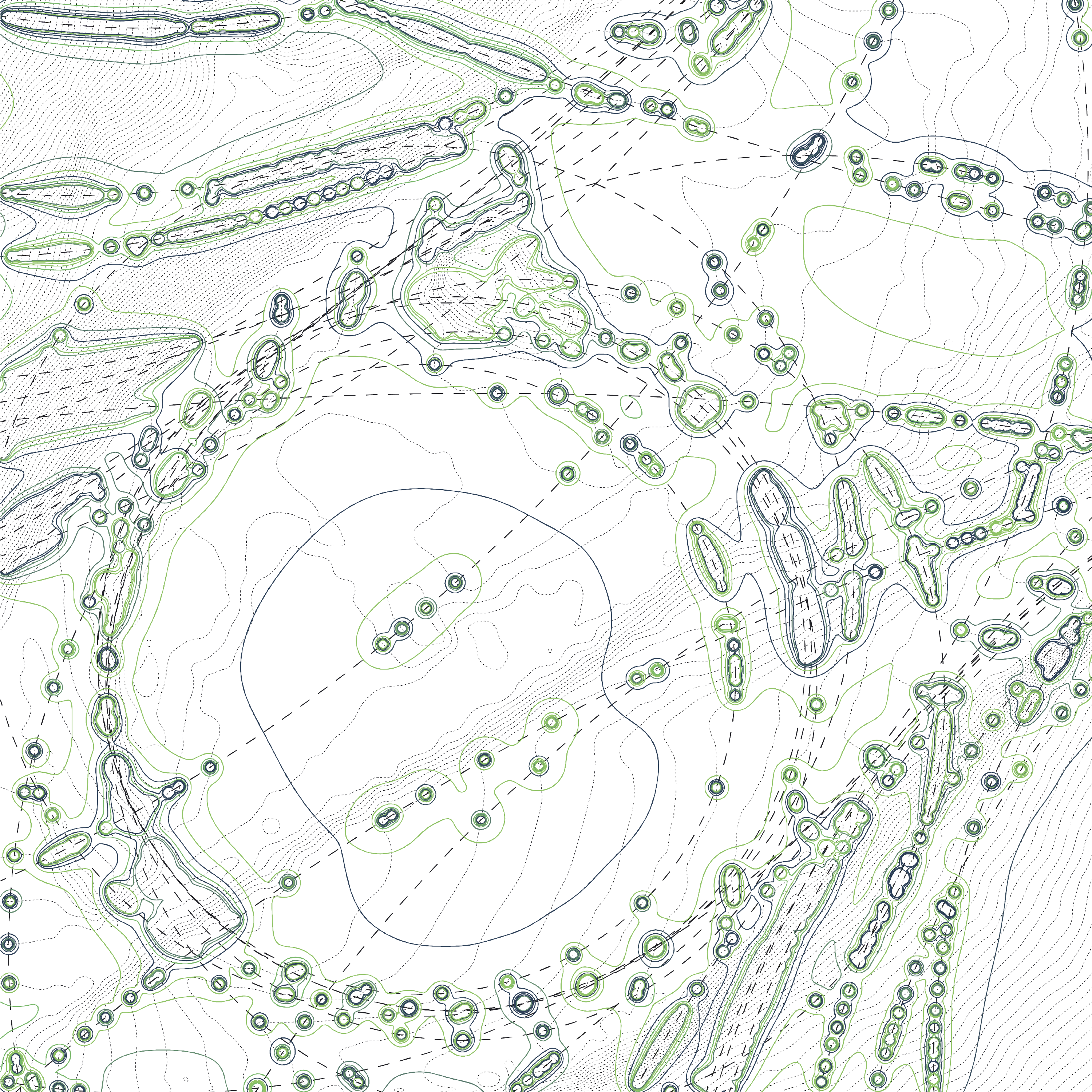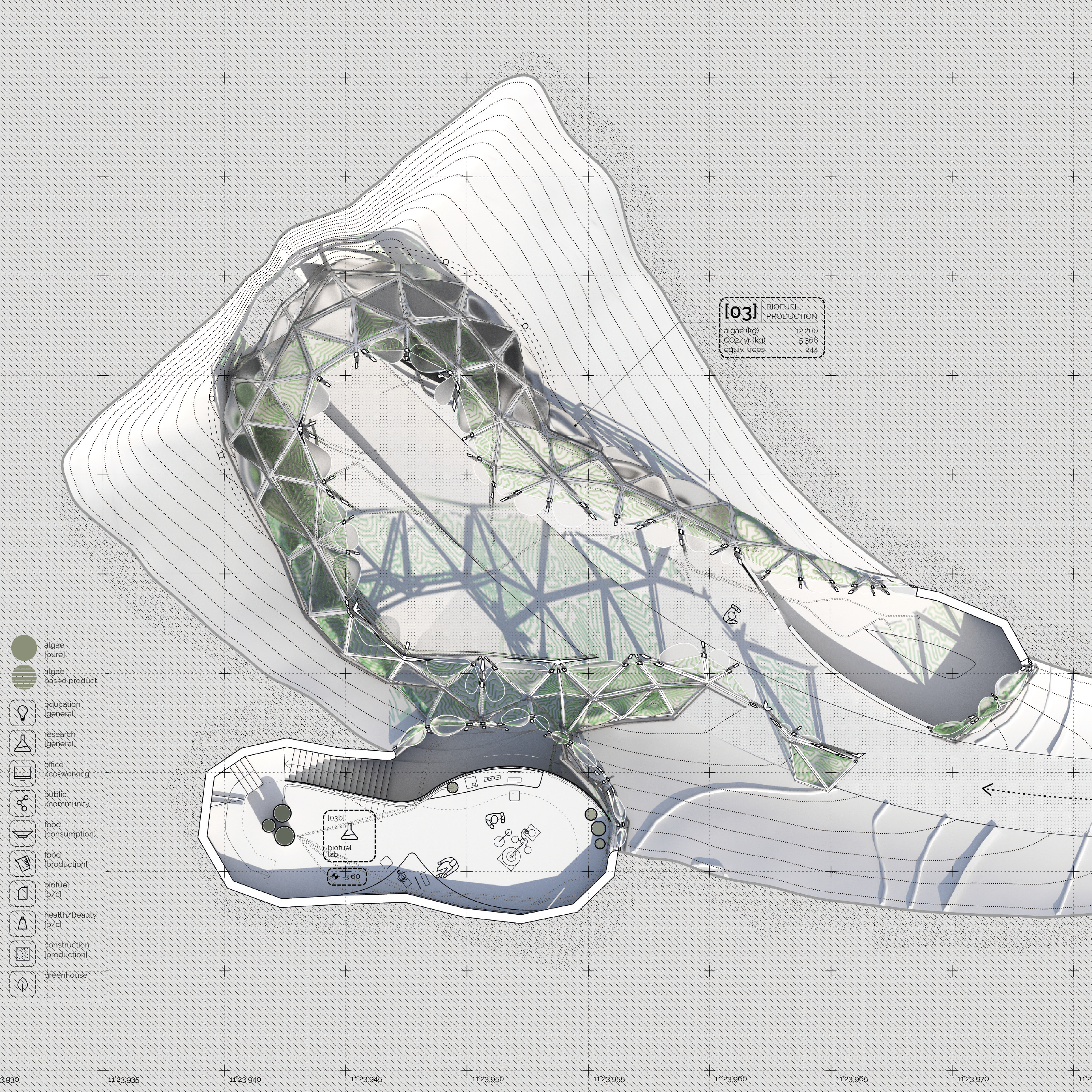The Climate Lab
Master Thesis by Lisa-Katharina Brunner
Synthetic Landscape Lab June 2019
Supervision by
Univ.-Prof. Dr. Claudia Pasquero, Dipl. Eng., MA AA
Maria Kuptsova, MArch
Metaphorically, the project symbolizes the interplay of the two most important factors: the paths the water would travel on its way downhill on the one hand and the curvature analysis circles of the motorway which represents the CO2 concentration in the area.
Both serve as a nutrient for the microalgae which will be the most crucial part of the design. The two-dimensional meta-circles were blown up into a three-dimensional shape resembling bubble-like structures scattered over the existing landscape.
The design of the final bubble is a triangulated structure. The triangular elements of the structure are not only a facade, but an essential functional element of the design.
Algae will flow within them – connecting several panels to a circulation system. The aim is to cover as much as possible of the surface in order to expose the microalgae to as much sunlight as possible while still maintaining a certain aesthetic.
With a labyrinth-like pattern the algae are forced to stay on one single path throughout its circulation. The pattern is achieved by a parametric process that splits a line into different segments which will then start to grow gradually and with increasing segment length spread out onto the surface.
The solar radiation defines the density of the algae pattern on each of the panel. This way the sunlight exposure and therefore the growth rates of the algae can be optimized. Algae will flow faster on areas with a lower average solar radiation and stay longer on areas with a high solar radiation.









